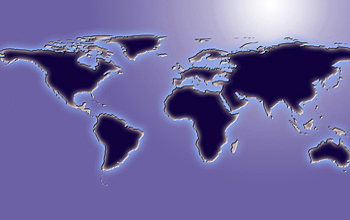News Release 08-197
Using Mathematical Models to Predict Global Migration
Mathematicians create a new approach to figure out who will move where in the 21st Century

In the coming decades, millions of people will leave their home countries and settle elsewhere.
November 6, 2008
View a video interview of Joel E. Cohen of Rockefeller University and Columbia University.
This material is available primarily for archival purposes. Telephone numbers or other contact information may be out of date; please see current contact information at media contacts.
The growing pace of globalization has increased the level of human migration as individuals and families move from one country or continent to another to escape hardships or seek a better future. The world's future stability will require the various countries that will lose and receive people to be prepared for this trend.
Joel E. Cohen, a researcher at Rockefeller University and Columbia University, discussed his work on developing mathematical models to predict human migration patterns in a videotaped interview. In this interview, Cohen describes how he and his colleagues developed a sophisticated mathematical model that gives policy makers a better estimate of which countries and regions will face declining populations and which ones will grow as people move around the world.
The United Nations and other agencies are interested in using this new approach, which is a departure from traditional population modeling.
The research was supported by the National Science Foundation.
-NSF-
-
View Video
Joel E. Cohen discusses his work on developing math models to predict human migration patterns.
Credit and Larger Version
Media Contacts
Dana W. Cruikshank, NSF, (703) 292-8070, email: dcruiksh@nsf.gov
The U.S. National Science Foundation propels the nation forward by advancing fundamental research in all fields of science and engineering. NSF supports research and people by providing facilities, instruments and funding to support their ingenuity and sustain the U.S. as a global leader in research and innovation. With a fiscal year 2023 budget of $9.5 billion, NSF funds reach all 50 states through grants to nearly 2,000 colleges, universities and institutions. Each year, NSF receives more than 40,000 competitive proposals and makes about 11,000 new awards. Those awards include support for cooperative research with industry, Arctic and Antarctic research and operations, and U.S. participation in international scientific efforts.
Connect with us online
NSF website: nsf.gov
NSF News: nsf.gov/news
For News Media: nsf.gov/news/newsroom
Statistics: nsf.gov/statistics/
Awards database: nsf.gov/awardsearch/
Follow us on social
Twitter: twitter.com/NSF
Facebook: facebook.com/US.NSF
Instagram: instagram.com/nsfgov



